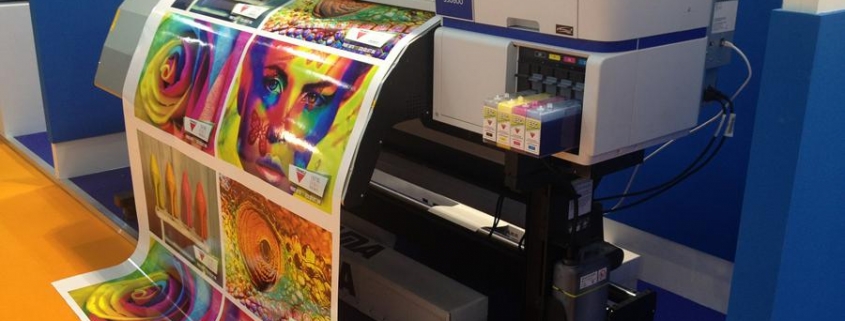Laser engraving is when the product surface is melted and evaporated with the laser. Consequently, the laser beam removes the material. The impression produced on the surface is the engraving.
Digital transfer is the process of printing a digital image onto special transfer paper. The product that is being branded is treated with a chemical before the logo is applied. The transfer paper is placed onto the product, transferring the ink from the paper onto the product. At this stage, the branded product is treated with a sealing chemical and or heat to ensure permanency of the logo.
In heat transfer printing, a design is printed in reverse on a special release paper. The printed image is then placed against the desired substrate (commonly a fabric, such as a T-shirt) and subjected to high temperature and pressure for a short period of time. After the substrate has cooled, the release paper is peeled away and the image will have been transferred to the substrate.
In digital printing, an image is sent directly to the printer using digital files such as PDFs and those from graphics software such as Illustrator and InDesign. Without the need to create a plate, digital printing has brought about fast turnaround times and printing on demand.
Domed decals are created by applying an epoxy resin over the top of a regular decal, which creates a clear dome. This catches the light and can make a two-dimensional dome’s colours and design stand out. Adding a domed layer of epoxy resin on top of the decal can lengthen its life. This creates a scratch-resistant, fade- and weather-proof layer.
Dye-sublimation printing works with polyester and polymer-coated substrates. The process uses the science of sublimation, in which heat and pressure are applied to a solid, turning it into a gas through an endothermic reaction without passing through the liquid phase. The end result of the sublimation process is a nearly permanent, high resolution, full-colour print.
A screenprint is a printing technique whereby a mesh is used to transfer ink onto a substrate. A blade or squeegee is moved across the screen to fill the open mesh apertures with ink, and a reverse stroke then causes the screen to touch the substrate. This causes the ink to wet the substrate and be pulled out of the mesh apertures as the screen springs back after the blade has passed. As the screen rebounds away from the substrate, the ink remains on the substrate.
Pad printing is a printing process that can transfer a 2-D image onto a 3-D object. This is accomplished using an indirect offset (gravure) printing process that involves an image being transferred from the cliché via a silicone pad onto a substrate.
Where to find us
The Willows Office Park – Block 4, George Road, Erand Gardens, Midrand, South Africa.
Tel: +27 67 000 8888 | +27 72 970 8699








